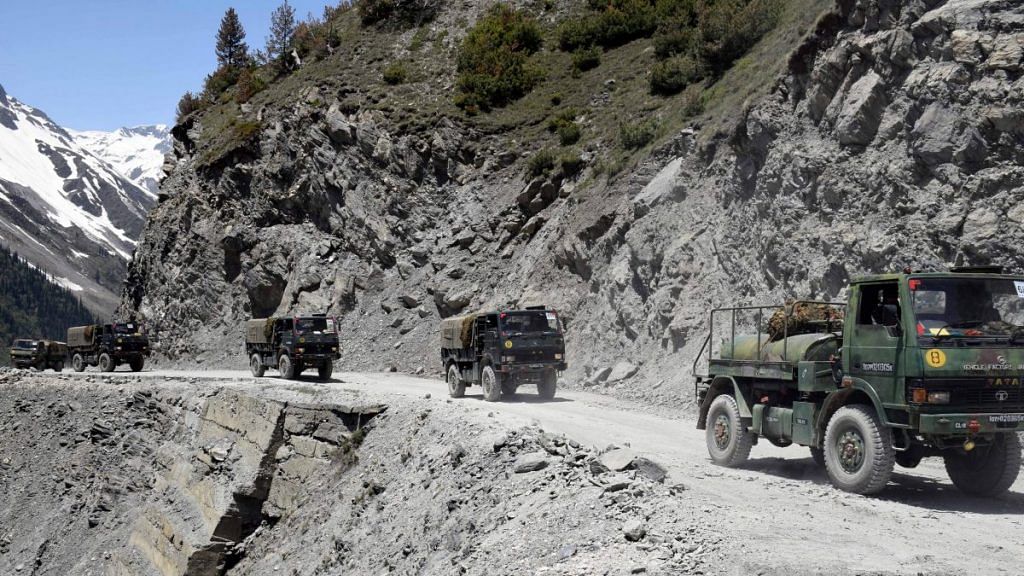New Delhi: The face-off between Indian and Chinese soldiers at Galwan Valley in eastern Ladakh late Monday evening resulted in at least 20 deaths on the Indian side, including the commanding officer of 16 Bihar battalion.
Several Indian soldiers were also allegedly taken captive by the Chinese People’s Liberation Army (PLA) but returned following talks at higher level, sources in the security establishment said.
In a statement issued Tuesday night, the Army said Indian and Chinese troops have disengaged in the Galwan area “where they had earlier clashed on the night of 15/16 June 2020”.
“Seventeen Indian troops who were critically injured in the line of duty at the stand-off location and exposed to sub-zero temperatures in the high altitude terrain have succumbed to their injuries, taking the total that were killed in action to 20,” the Army said.
“Indian Army is firmly committed to protect the territorial integrity and sovereignty of the nation.”
It did not mention any injuries or deaths on the Chinese side, unlike the statement issued earlier in the day that said both sides had suffered casualties.
There is speculation that some soldiers remain missing but the Army didn’t address this aspect in its statement.
The face-off Monday night is the first time in 45 years that a soldier has died along the Line of Actual Control (LAC), which remains undefined in Ladakh. It marks bilateral tensions of an intensity not seen since the 1962 war.
While the Western Theatre Command of the PLA has blamed the face-off on India, claiming Galwan Valley as Chinese territory, the Indian Ministry of External Affairs (MEA) has accused Beijing of trying to unilaterally change the status quo in the area.
The MEA cited the 6 June meeting between senior commanders of the two sides and noted that they had agreed on a process for de-escalation. Subsequently, ground commanders had a series of meetings to implement the consensus reached at a higher level, the ministry said.
“While it was our expectation that this would unfold smoothly, the Chinese side departed from the consensus to respect the Line of Actual Control (LAC) in the Galwan Valley,” it added.
“On the late-evening and night of 15 June 2020 a violent face-off happened as a result of an attempt by the Chinese side to unilaterally change the status quo there,” the ministry added.
Also Read: Why the remote Galwan Valley is a flashpoint between India and China
How and why the clash took place
According to sources, 16 Bihar Commanding Officer (CO) Col Santosh Babu had held talks with the Chinese side earlier Monday at Patrol Point 14, which is located at the mouth of the Galwan Valley.
“It was decided during the meeting that both sides will undertake some de-escalation steps and will move back by some distance. However, in the evening the CO found that Chinese did not fulfil the entire sequence of de-escalation,” a source told ThePrint.
This is said to have led to a verbal spat between the two sides, which soon “turned into pushing and jostling”. More Chinese troops subsequently came in, armed with rods and wooden spikes with nails on them.
The Indian soldiers, the sources said, were outnumbered at this point. Since the engagement was happening on a narrow slope, some soldiers fell into the confluence of the Shyok and Galwan rivers, the sources added.
More Indian troops then rushed in, and stone-pelting and physical clashes continued “several hours into the night”.
It was only in the morning that the bodies were found, including those of the soldiers who had fallen into the river. Babu was killed too.
While some of the deaths were the result of the clashes, the other soldiers died of hypothermia after falling into the cold waters of the river, sources said.
Also Read: After clash with India, PLA says China always had sovereignty over Galwan Valley region
